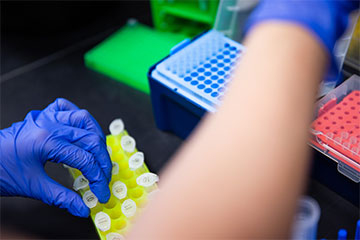Bioluminescent Optogenetics Lab
The natural world supplies us with a vast contingent of light-sensing molecules, photoreceptors, from across the phylogenetic spectrum that are activated by sunlight.


Nature also supplies us with light-emitting molecules, luciferases, enzymes that oxidize small molecule luciferins thereby emitting "biological light" or bioluminescence.
The research in our laboratory focuses on combining genetically encoded light emitters and light sensors for the bioluminescent activation of photoreceptors, BioLuminescent OptoGenetics (BL-OG). In addition to the continuous development of the technology, we are also applying novel tools in basic and translational neuroscience projects. See more about our research on Bioluminescent Optogenetics Lab Research page.
We are using a wide range of approaches and technologies for these studies. To enable efficient development and testing of novel BL-OG tools, we established the infrastructure and expertise to proceed from molecular engineering to generating viral vectors, testing transduced primary neurons by patch recordings and on multi-electrode arrays, stereotaxic injections into mouse brains, recording in vivo, to running behavioral test batteries. Recognizing the value of machine learning for handling behavioral and other data streams, we further invested in building up computer capacities, hardware and software expertise.
To learn more about the research, publications and members of the Bioluminescent Optogenetics Lab, please visit the Lab Research and Lab Members tabs.
Links and resources
Join the lab
Undergraduate and graduate students, post-baccalaureate and post-doctoral fellows: please contact Ute Hochgeschwender.




